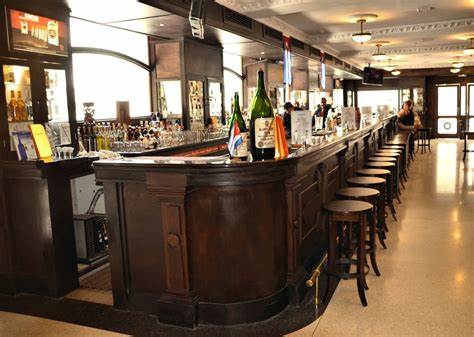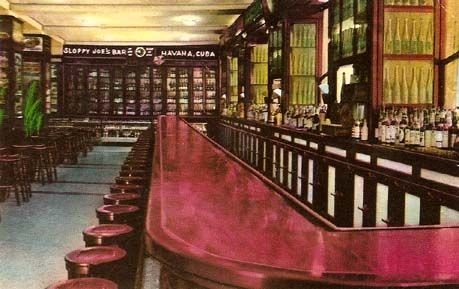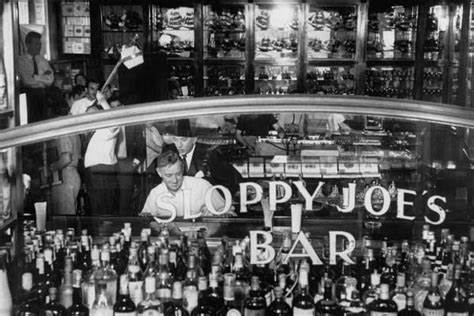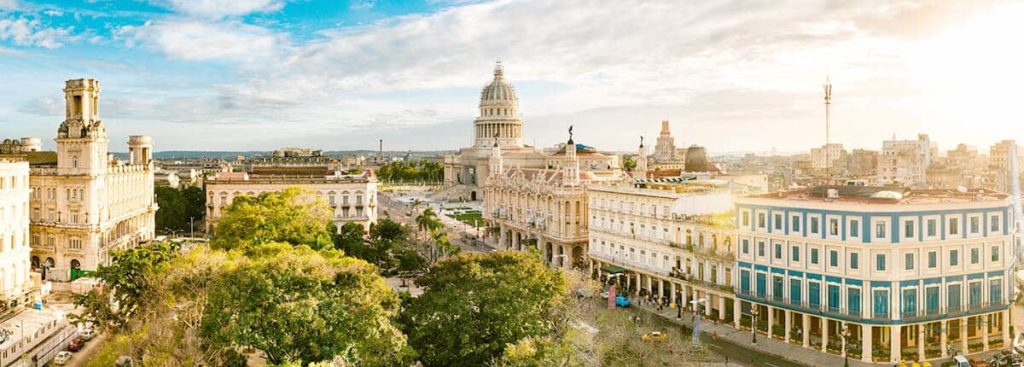THE ORIGINAL SLOPPY JOE’S BAR, PRIDE OF OLD HAVANA. HIS FAMOUS BLACK COUNTER. PHOTOS.
The Sloppy Joe’s Bar, but which one are we referring to? The one in Havana or the one in Key West? And it is that there are two famous “Sloppys” since the 30s of the last century, located in cities bathed by the Caribbean Sea, with different owners, with origins and fame associated with relevant characters, they have the same name, both are located on an island, their owners were called Joe and José, they are in downtown corners of the cities and Hemingway hung around both of them.
THIS WAS THE STORY OF THE HABANERO, THE ORIGINAL “SLOPPY JOE’S”…
José Abeal, a Galician who arrived in Cuba in 1904, worked as a waiter and after three years he went to have better luck in New Orleans, where he stayed for six years until he moved to Miami to earn a living as a bartender and returned to the Cuban capital in 1918. Due to the experience gained, it did not take him long to get a job, where he saved enough money to buy an old bodegón on Ánimas street, one block from Central Park and a few steps from the Plaza Hotel.
Since the Prohibition in the United States, some Americans who knew Abeal from when he lived in Miami, visited him in his dilapidated and rather dirty still life, and suggested that he turn the place into a bar for North American travelers since he spoke English correctly. He changed his name to “Joe”, and added the word “sloppy”, because of the look of the place. Over the years it would become one of the most famous bars in Cuba, very frequented by every American tourist who set foot in the Cuban capital.
Everyone in Old Havana at that time talked about the life of the place and especially the bar. It caught everyone’s attention.
The black mahogany bar of the Sloppy Joe’s Bar was 18 meters long, the largest in Cuba and Latin America in the 1920s and 1930s of the last century and has become a mystery to those who insist on tracking his current whereabouts. Neither the graphic testimonies, which are numerous nor the profuse oral tradition on the site, have made it possible to discover the origin of the famous black mahogany counter.
It would be necessary to add 50 centimeters in width to the length of the 18-meter bar, which had a bronze footrest 18 centimeters high and 30 stools, although photos from the time indicate that it could accommodate almost twice as many consumers.
The historical file of Sloppy Joe’s preserved in the archives of the Architecture and Urbanism Projects building, belonging to the Office of the Historian, confirms that the bar had 20 tables and was popular for its large black mahogany bar, the longest in the hemisphere, with the added attraction of being made from a single piece, that is, from a single trunk. However, it does not show any information about the craftsmen who worked it.
Contrasting with the name of the place (sloppy, which means sloppy in English), it is said that the beautiful wooden bar was always so shiny that it could be seen from the street.
On the walls of Sloppy Joe’s are photographs of great personalities of the time-consuming in the authentic black mahogany bar. Among them, Frank Sinatra, Clark Gable, Spencer Tracy, Don Ameche, Gary Cooper, John Wayne, Babe Ruth, Errol Flynn, Ernest Hemingway, Tyrone Powers, César Romero, John Barrymore, and the Cuban intellectuals Alejo Carpentier, Enrique Labrador Ruiz, Eliseo Diego and Cintio Vitier.
One of his regular clients, Ernest Hemingway, is the one who suggested to Joe Russell the name of this bar for his in Key West, in 1933. I have already told in an article about my visit to Key West, where the Sloppy of that place was wanted to consider as the original.
In 1965 the Sloppy was closed, apparently due to insecurity, but it was because it had languished like everything that was nationalized, the counter was fragmented. One of his pieces is in the Rum Museum. That third of the original bar, in this case, a piece of 6.57 meters, was attached to another non-precious wood.
In April 2013, the Habaguanex company reopened the place, after completing the investment process that restored the emblematic bar, located on the corner of Ánimas and Zulueta streets. The famous counter was replaced by a replica, as well as the surrounding stools, tables and shelves
There are many coincidences, but everyone knows that the original Sloppy Joe’s is the one in Havana. Even in the one in Key West, the history of Hemingway’s name and intervention is made.
Without a doubt, the Havana Sloppy Joe was one of the best bars in the world.
Another sample of all the destruction or involution of what they have wanted to present us with the name of revolution.
EL SLOPPY JOE’S BAR ORIGINAL, ORGULLO DE LA HABANA VIEJA. SU FAMOSA BARRA NEGRA. PHOTOS
El Sloppy Joe’ Bar, ¿Pero a cuál nos referimos?, ¿Al de La Habana o al de Key West? Y es que existen dos “Sloppys” famosos desde los años 30 del pasado siglo, situados en ciudades bañadas por el mar Caribe, con diferentes dueños, con orígenes y fama asociados a personajes relevantes, tienen el mismo nombre, ambos están situados en una isla, sus propietarios se llamaban Joe y José, están en esquinas céntricas de las ciudades y Hemingway rondó por ambos.
ASI FUE LA HISTORIA DEL HABANERO, EL ORIGINAL “SLOPPY JOE’S”…
José Abeal, un gallego que llegó a Cuba en el año 1904 trabajó como camarero y a los tres años se fue a correr mejor suerte en Nueva Orleans, donde estuvo seis años hasta que se trasladó a Miami para ganarse la vida como cantinero y regresó a la capital cubana en 1918. Por la experiencia adquirida no demoró en conseguir empleo, donde ahorró dinero suficiente para comprar un viejo bodegón en la calle Ánimas, a una cuadra del Parque Central y a pocos pasos del Hotel Plaza.
A partir de la Ley Seca en Estados Unidos unos americanos que conocían a Abeal de cuando vivía en Miami, lo visitaron en su bodegón, un tanto destartalado y bastante sucio, y le sugirieron que convirtiera el lugar en un bar para viajeros norteamericanos, ya que él hablaba correctamente el inglés. Cambió su nombre por el de “Joe”, y le agregó la palabra “sloppy”, por el aspecto del lugar. Con los años llegaría a convertirse en uno de los más famosos bares de Cuba, muy frecuentado por cuanto turista norteamericano pusiera sus pies en la capital cubana.
Todos en La Habana vieja de entonces se hablaba de la vida del lugar y sobre todo la barra. A todos le llamaba la atención.
La barra de caoba negra del Sloppy Joe´s Bar, tenía 18 metros de largo, la más grande de Cuba y América Latina en las décadas de 1920 y 1930 del siglo pasado y se ha tornado todo un misterio para aquellos que se empeñan en rastrear su actual paradero. Ni los testimonios gráficos, que son numerosos, ni la profusa tradición oral sobre el sitio, no han permitido conocer el origen del famoso mostrador de caoba negra.
Al largo de la barra de 18 metros habría que añadirle 50 centímetros de ancho y que contaba con reposapiés de bronce de 18 centímetros de altura y 30 banquetas, aunque fotos de la época indican que cabía casi el doble de consumidores.
El expediente histórico del Sloppy Joe´s conservado en los archivos del edificio de Proyectos de Arquitectura y Urbanismo, perteneciente a la Oficina del Historiador, confirma que el bar contaba con 20 mesas y era popular por su gran barra de caoba negra, la más larga del hemisferio, con el adicional atractivo de estar hecha de una sola pieza, o sea, de un tronco único. Sin embargo, no muestra ninguna información sobre los artesanos que la trabajaron.
Contrastando con el nombre del lugar (sloppy, que significa descuidado en inglés), se dice que la barra de madera preciosa siempre estaba tan brillante que se podía ver desde la calle.
En las paredes del Sloppy Joe´s están expuestas fotografías de grandes personalidades de la época consumiendo en la auténtica barra de caoba negra. Entre ellos, Frank Sinatra, Clark Gable, Spencer Tracy, Don Ameche, Gary Cooper, John Wayne, Babe Ruth, Errol Flynn, Ernest Hemingway, Tyrone Powers, César Romero, John Barrymore y los intelectuales cubanos Alejo Carpentier, Enrique Labrador Ruiz, Eliseo Diego y Cintio Vitier.
Uno de su clientes habituales, Ernest Hemingway, es quien sugiere a Joe Russell el nombre de este bar para el suyo de Cayo Hueso, en 1933. Ya he contado en un artículo de mi vista a Cayo Hueso, donde el Sloppy de ese lugar se quiere considerar como el original.
En 1965 clausuran el Sloppy, aparentemente por inseguridad, pero era por haber languidecido como todo lo que fue nacionalizado, el mostrador fue fragmentado. Una de sus piezas se encuentra en el Museo del Ron. Ese tercio de la barra original, en este caso una pieza de 6.57 metros, fue acoplada a otra de madera no preciosa.
En abril de 2013, la empresa Habaguanex reabrió el lugar, tras finalizar el proceso inversionista que restauró el emblemático bar, ubicado en la esquina de las calles Ánimas y Zulueta. El famoso mostrador fue sustituido por una réplica, así como las banquetas, mesas y estanterías aledañas
Son muchas coincidencias, pero todos saben que el Sloppy Joe´s original es el de La Habana. Inclusive en el de Key West se hace la historia del nombre y la intervención de Hemingway.
Sin duda el Sloppy Joe habanero fue uno de los mejores bares del mundo.
Otra muestra más de toda la destrucción o involución de lo que nos han querido presentar con el nombre de revolución.
Agencies/ Wiki/ MemoriasCubanas/ Carlos RodriguezB./ Extractos/ Excerpts/ Internet Photos/ Arnoldo Varona/ www.TheCubanHistory.com
THE CUBAN HISTORY, HOLLYWOOD.










